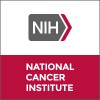
A Study of YM155 Plus Rituximab in Subjects With Non-Hodgkin's Lymphoma Who Have Received Prior...
Non-Hodgkin's LymphomaThe purpose of this study is to evaluate response rate, survival, safety and tolerability of YM155 given in combination with rituximab in subjects with Non-Hodgkin's Lymphoma.

Bendamustine Plus Rituximab Versus CHOP Plus Rituximab
Non-Hodgkin LymphomasFollicular Lymphomas3 moreThe study addresses the question if the first line therapy of low malignant and mantle cell lymphomas with bendamustine plus rituximab is comparable (non inferior) with CHOP plus rituximab with regard to progression free survival (PFS).

Dose Escalation Safety Study of TL32711 in Adults With Refractory Solid Tumors or Lymphoma
CancerA Phase 1 open-label, non-randomized dose escalation study to determine the maximum tolerated dose (MTD) and characterize the safety and tolerability of Birinapant (TL32711).

Immunochemotherapy With Rituximab-Bendamustine-Cytarabine (R-BAC) for Patients With Mantle Cell...
LymphomaMantle-CellThe objective of the study is to demonstrate the safety, tolerability, and activity of Rituximab-Bendamustine-Cytarabine(R-BAC) regimen in patients with mantle cell lymphoma (MCL) aged 65 years or more, as well as in younger patients who are not eligible for intensive regimens including/not including autologous transplantation.

Gemcitabine Hydrochloride, Cyclophosphamide, Vincristine Sulfate, Prednisolone, and Rituximab in...
LymphomaRATIONALE: Drugs used in chemotherapy, such as gemcitabine hydrochloride, cyclophosphamide, vincristine sulfate, and prednisolone, work in different ways to stop the growth of cancer cells, either by killing the cells or by stopping them from dividing. Monoclonal antibodies, such as rituximab, can block cancer growth in different ways. Some block the ability of cancer cells to grow and spread. Others find cancer cells and help kill them or carry cancer-killing substances to them. Giving more than one drug (combination chemotherapy) together with rituximab may kill more cancer cells. PURPOSE: This phase II trial is studying giving gemcitabine hydrochloride, cyclophosphamide, vincristine sulfate, and prednisolone together with rituximab to see how well it works in treating patients with newly diagnosed diffuse large B-cell lymphoma.

Phase I and Pharmacology Study of Camptothecin-20-O-Propionate Hydrate (CZ48) in Patients With Solid...
Advanced Solid TumorsLymphomasThis is a phase I and pharmacology study of Camptothecin-20-O-Propionate Hydrate (CZ48) in Patients with Solid Tumors or Lymphoma. OBJECTIVES Primary: To describe the dose limiting toxicities and adverse event profile of Camptothecin-20-O-Propionate hydrate (CZ48) administered orally every day. To determine Phase II recommended dose of Camptothecin-20-O-Propionate hydrate (CZ48) administered orally every day. Secondary: To perform a pharmacokinetic study of orally administered CZ48 in the plasma. To assess responses by RECIST criteria. To follow patients for survival.

A Phase 1, Dose Escalation Study of the Safety, Tolerability, and Pharmacokinetics of Intravenous...
Renal Cell CarcinomaBreast Cancer3 moreBackground: Dimethane sulfonate (DMS612) is an investigational drug that is being administered to humans for the first time in people with advanced tumors. More information on the maximum tolerated dose of DMS612 will help researchers identify whether the drug is suitable for use in treating certain kinds of cancer, particularly renal cell carcinoma. Objectives: To determine the maximum tolerated dose of DMS612 (the highest dose that does not cause unacceptable side effects) and evaluate any side effects. To see if DMS612 has any effect on patients tumors through blood tests and laboratory studies. To learn how the body processes DMS612. Eligibility: Patients 18 years of age and older who have been diagnosed with cancer that has not responded well to standard treatments. Design: Pre-treatment evaluation visit to determine eligibility: Physical examination Blood and urine tests Chest X-ray; electrocardiogram; CAT scan of chest, abdomen, pelvis, and other areas of the body if needed Other possible tests, such as magnetic resonance imaging (MRI) or positron emission tomography (PET) Patients will receive one dose of DMS612 by intravenous infusion once a week for 3 weeks, followed by 1 week without the drug. Doses will be adjusted based on possible side effects and cancer response. The disease will be evaluated after three cycles of the drug. Evaluations during the treatment period: Physical examination and reviews of side effects. Blood draws to evaluate the effectiveness of the drug, and how it is processed by the body. CAT scan at the end of every two cycles (every 8 weeks). Other scans and imaging procedures as required by the study doctors.

Wilm's Tumor 1 Protein Vaccine to Treat Cancers of the Blood
LeukemiaAcute Myelogenous (AML)6 moreBackground: Most patients with acute lymphoblastic leukemia (ALL) and many patients with acute myelogenous leukemia (AML), chronic myelogenous leukemia (CML) and non-Hodgkin's lymphoma (NHL) have a protein called Wilm's Tumor 1 (WT1) in their cancer cells. This protein is thought to be able to influence the growth of these cancers. A vaccine made with the WT1 protein may boost the immune system to help fight these cancers in patients whose cancer cells contain the protein. Objectives: To determine the safety, effectiveness and side effects of giving the WT1 vaccine and donor white blood cells to patients with AML, ALL, CML or NHL who have previously received standard treatment and undergone stem cell transplantation. To determine the immune response to the WT1 vaccine and donor white blood cells in these patients and to determine if the response is related to the amount of WT1 protein in the patient's cancer cells. Eligibility: Patients between 1 and 75 years of age with the blood antigen human leukocyte antigen (HLA-A2) and the WT1 cancer protein who have persistent or recurrent blood cancers after stem cell transplantation. The prior stem cell transplant donor must be willing to provide additional cells, which will be used to prepare the cellular vaccines and for donor lymphocyte (white blood cell) infusions. Design: Patients are given the WT1 vaccine every 2 weeks for 6 weeks (weeks 0, 2, 4, 6, 8, 10). Each vaccination consists of two injections in the upper arm or thigh. On weeks 0, 4 and 8, patients also receive white blood cells from a donor to enhance the immune response. The cells are also given as a 15- to 30-minute infusion through a vein about 1 hour after the vaccine injection. Donor infusions are given only to patients with mild or no graft-vs-host disease resulting from their prior stem cell transplantation. Periodic physical examinations, blood and urine tests, scans to evaluate disease and other tests as needed are done for 12 months after enrollment in the study.

DT2219ARL for Relapsed or Refractory CD19 (+), CD 22 (+) B-Lineage Leukemia Or Lymphoma
LeukemiaLymphomaThis is a phase I dose escalation study of DT2219ARL for the treatment of relapsed or refractory B-lineage leukemia and lymphoma. Patients will receive a single course of DT2219ARL as a 4 hour infusion on days 1, 3, 5, and 8. Weekly follow-up will continue through day 29, at which time a disease reassessment will be done. For patients in remission, follow-up will continue monthly until disease progression or start of a new treatment. Otherwise day 29 will be the final study visit if there is no ongoing toxicity. This phase I study will use Continual Reassessment Method (CRM) to establish a maximum tolerated dose (MTD) of DT2219ARL. Up to 3 dose levels will be tested with an additional dose level (-1) if dose level 1 proves too toxic. The goal of CRM is to identify the dose level which correspondences to a desired toxicity rate of 33% or less using grade 3 or 4 capillary leak syndrome and any grade 3 or greater toxicity attributed to DT2219ARL as the targeted toxicity (based on CTCAE version 4).

Sunitinib Malate in Treating HIV-Positive Patients With Cancer Receiving Antiretroviral Therapy...
Accelerated Phase Chronic Myelogenous LeukemiaAcute Myeloid Leukemia With Multilineage Dysplasia Following Myelodysplastic Syndrome87 moreThis phase I trial studies the side effects and the best dose of sunitinib malate in treating human immunodeficiency virus (HIV)-positive patients with cancer receiving antiretroviral therapy. Sunitinib malate may stop the growth of cancer cells by blocking some of the enzymes needed for cell growth and by blocking blood flow to the tumor.
